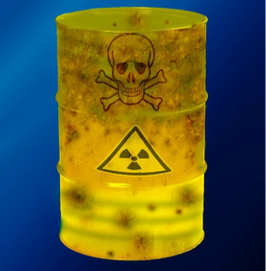HAZARDOUS WASTE EDUCATION
Household Hazardous Waste
Leftover household products that contain corrosive, toxic, ignitable, or reactive ingredients are considered to be household hazardous waste (HHW). Products, such as paints, cleaners, oils, batteries, and pesticides, that contain potentially hazardous ingredients require special care when you dispose of them.
Improper disposal of HHW can include pouring them down the drain, on the ground, into storm sewers, or in some cases, putting them out with the trash. The dangers of such disposal methods might not be immediately obvious, but improper disposal of these wastes can pollute the environment and pose a threat to human health. Many communities in the United States offer a variety of options for conveniently and safely managing HHW.
Improper disposal of HHW can include pouring them down the drain, on the ground, into storm sewers, or in some cases, putting them out with the trash. The dangers of such disposal methods might not be immediately obvious, but improper disposal of these wastes can pollute the environment and pose a threat to human health. Many communities in the United States offer a variety of options for conveniently and safely managing HHW.
Benefits of Proper HHW Management
Reduction and recycling of HHW conserves resources and energy that would be expended in the production of more products. Reuse of hazardous household products can save money and reduce the need for generating hazardous substances. Proper disposal prevents pollution that could endanger human health and the environment.
HHW Disposal Options
Certain types of HHW have the potential to cause physical injury to sanitation workers, contaminate septic tanks or wastewater treatment systems if poured down drains or toilets, and present hazards to children and pets if left around the house. Read product labels for disposal directions to reduce the risk of products exploding, igniting, leaking, mixing with other chemicals, or posing other hazards on the way to a disposal facility. Even empty containers of HHW can pose hazards because of the residual chemicals that might remain.
More Hazardous Waste

The Environmental Protection Agency (EPA) has developed categories of Hazardous Waste based on sources and properties or characteristics. You can learn more about specific waste items here.
- Listed Wastes: Wastes that EPA has determined are hazardous. The lists include the F-list (wastes from common manufacturing and industrial processes), K-list (wastes from specific industries), and P- and U-lists (wastes from commercial chemical products).
- Characteristic Wastes: Wastes that do not meet any of the listings above but that exhibit ignitability, corrosivity, reactivity, or toxicity.
- Universal Wastes: Batteries, pesticides, mercury-containing equipment (e.g., thermostats) and lamps (e.g., fluorescent bulbs).
- Mixed Wastes: Waste that contains both radioactive and hazardous waste components.




